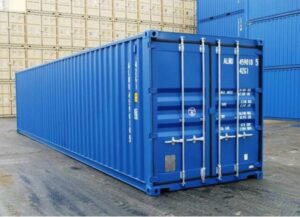
Ukraine increased imports of goods in January-November 2025 by 18.5% in monetary terms to $75.4 billion, while exports decreased by 4.02% to $36.8 billion from $38.3 billion, according to the State Customs Service of Ukraine (SCS).
“At the same time, taxable imports amounted to $57.6 billion, which is 76% of the total volume of imported goods. The tax burden per 1 kg of taxable imports in January-November 2025 was $0.52/kg,” the SSU notes.
The countries from which the most goods were imported to Ukraine included China ($17 billion), Poland ($7.1 billion), and Germany ($5.9 billion).
The largest exports from Ukraine were to Poland ($4.6 billion), Turkey ($2.5 billion), and Germany ($2.2 billion).
Of the total volume of goods imported in January-November 2025, 67% fell into the following categories: machinery, equipment, and transport – $30.2 billion (during customs clearance of these goods, UAH 185.8 billion, or 29% of customs payments, was paid to the budget); chemical industry products – $11.4 billion (UAH 89 billion, or 14% of customs payments, was paid to the budget), fuel and energy products – $9.4 billion (UAH 188.4 billion, or 29% of customs payments, was paid).
The top three most exported goods from Ukraine were food products – $20.4 billion, metals and metal products – $4.3 billion, machinery, equipment, and transport – $3.4 billion.
“In the first 11 months of 2025, during customs clearance of exports of goods subject to export duties, UAH 1.2 billion was paid to the budget,” the SSU added.

US President Donald Trump has signed an executive order raising tariffs on imports from Canada from 25% to 35% as part of efforts to combat the flow of illegal drugs across the northern border. The new tariffs will take effect on August 1, 2025, according to the White House’s official website.
According to the administration, the decision was made against the backdrop of “Canada’s persistent failure to arrest drug traffickers, seize illegal drugs, or coordinate with U.S. law enforcement agencies.”
“The president’s further actions are necessary and appropriate to protect the lives of Americans, as well as the national security and foreign policy of the United States of America,” the statement said.
The White House recalled that Trump declared a state of emergency under the International Emergency Economic Powers Act (IEEPA) in response to the crisis caused by fentanyl and other illegal drugs.
The preferential treatment for goods covered by the US-Mexico-Canada Agreement (USMCA) remains in place. At the same time, goods that are transshipped to avoid the new tariff will be subject to a separate 40% transshipment duty.
It is noted that in this fiscal year alone, more fentanyl has been seized at the northern border of the United States than in the previous three years combined.

The first container of Serbian goods was shipped to China on Friday as part of the Free Trade Agreement between the two countries, according to the Serbian government website. The container contains products from local companies such as Pionir, Akov, Fruskogorski Vinograd, Vinarija Aleksić, Nutrino, Nash Med, Zarić Rakija, Budimka, and Damar. The transportation was organized by the Milšped company from Krnoševac, near Stara Pazova.
The Minister of Economy Adriana Mesarović noted that this is the result of the hard work of Serbian entrepreneurs, government agencies and Chinese partners, as well as confirmation of the “steel friendship” between China and Serbia. She emphasized that Chinese retailers, importers and distributors have expressed their willingness to accept Serbian products in a market of 1.4 billion consumers.
Chinese Ambassador to Serbia Li Ming said that thanks to the Free Trade Agreement, which entered into force on July 1, 2024, Serbia became China’s first partner in Central and Eastern Europe with such an agreement. He noted that since the agreement came into force, Serbia’s exports to China have increased by 53.7%, and more and more Serbian wines and dairy products are appearing on Chinese tables.
The free trade agreement covers 10,412 Serbian and 8,930 Chinese products. From the first day of application, 60% of the goods were exempted from duties, and over the next five to ten years, another 30% of products will be exempted from customs duties.
Source: https://t.me/relocationrs/633

Exports of goods from Ukraine in June 2024 decreased by 7% compared to a year earlier and amounted to $2.77 billion, the lowest figure since the beginning of this year, the Institute for Economic Research and Policy Consulting (IER) reported on Tuesday.
According to the IER’s monitoring of foreign trade, exports of agricultural products decreased by 2% to $1.60 billion, but exports of its components developed differently: corn exports increased by 12% (21% in physical terms), while exports of wheat and oil decreased by 32% and 5%, respectively.
In June, exports of metallurgy products fell by over 9% y-o-y to $355 m. The IER believes that this likely reflected higher energy costs and a change in the structure of exports: exports of pig iron and certain types of rolled products decreased, while exports of semi-finished and other products increased.
In addition, exports of mineral products, primarily iron ore, increased by 33%, but were lower than in January-April 2024.
The IER emphasized that due to the resumption of exports from Odesa ports, the volume of iron ore exports in tons increased by 87% in June, although it was lower than in previous months due to a shortage of electricity.
Exports of mineral products grew by only 33%.
As for imports, they remained almost unchanged in June compared to May, but increased by 12% to $5.63 billion by the same period in 2023.
In terms of sectors, imports of machinery and equipment increased by almost 20% year-on-year in June 2024 (especially imports of drones, batteries, and generators), while imports of cars decreased slightly in dollar terms due to lower import prices.
Imports of energy products increased by 16% yoy due to higher imports of coke and coal, likely to meet the needs of the metallurgy sector, which increased steel production.
At the same time, imports of chemicals and food products decreased.
It is noted that the greatest impact was the growth of imports of “other goods” (primarily purchased for the needs of the Armed Forces) – under this category, goods worth $752 million were imported to Ukraine ($400 million in the previous months of the year).
As explained by the IER, the shortage of electricity led to an increase in its imports – from $6 million in June 2023 to $78 million in June 2024, as well as batteries – from $18 million a year earlier to $68 million in June 2024.

“Solidarity corridors” have allowed Ukraine to export more than 136 million tons of products such as grain, ore and steel since 2022 and import more than 52 million tons of goods, including fuel, vehicles, fertilizers, as well as military and humanitarian aid, pap.pl reports, citing the European Commission.
“In 2022, the EC, in cooperation with Ukraine and Moldova, created the so-called solidarity corridors to improve the operation of EU-Ukraine-Moldova transport routes after Russia’s invasion of Ukraine. These are alternative logistics routes that allow for the transportation of goods by rail, road, and inland waterway. The corridors, created to circumvent Russia’s blockade of Ukrainian grain exports through the Black Sea, now cover trade in all sectors,” the European Commission reminded.
“Solidarity Corridors” allow Ukraine and Moldova to export all types of goods to world markets and ensure the delivery of necessary products to Ukraine, the EC explained. These routes pass through the Danube region, Poland, the Baltic States and the Adriatic region. They complement the Black Sea route created by Ukraine in the fall of 2023.
The European Commission is convinced that the Danube Corridor and the Polish-Baltic Corridor are crucial for all imports, while the Adriatic Sea is of particular importance for Ukraine’s non-agricultural exports.
The European Union and international financial institutions have so far allocated more than EUR 2 billion to these routes. Large-scale projects include EU funding to improve navigation on the Danube and the Sulyn Canal to the Black Sea. River pilots have been trained with EU funds. In addition, information exchange with Ukrainian ports has been improved. This cooperation has helped to increase the safety and capacity of Danube navigation.
“Two years ago, the Solidarity Corridors changed logistics routes in Eastern Europe to support the functioning of the economies of Ukraine and Moldova and prevent a global food crisis. To date, they have brought about EUR 50 billion in revenue to businesses and at the same time strengthened Ukraine’s economic ties with the EU,” said European Commissioner Adina Valian.

Ukraine’s exports in April this year increased by 11% compared to March and reached 13.1 million tons, the best result since the full-scale Russian invasion, First Deputy Prime Minister and Minister of Economy Yulia Svyrydenko said on Facebook on Wednesday.
“This is an absolute record for the entire period of the full-scale war. For example, in March, exports amounted to 11.8 million tons, in January – 12 million tons. Importantly, this figure is higher than the level of pre-war February 2022. Back then, we exported 12.8 million tons,” the Minister of Economy reminded.
According to her, in monetary terms, exports in April amounted to $3.3 billion compared to $3.2 billion in March.
Svyrydenko noted that the growth in exports was primarily due to the operation of an alternative sea corridor, which made it possible to partially compensate for losses in the economy due to the blockade of the Polish-Ukrainian border, as well as the introduction of a mechanism for insuring ships against military risks, which initially applied only to agricultural products, but was soon expanded to all non-military cargo.
“Of course, the growth and expansion of the capacity of the Solidarity Roads, primarily with Moldova and Romania, has also added to the growth. And the improvement of the conditions for the transportation of goods by rail to the Danube ports,” the Deputy Prime Minister said.